The Early Renaissance gradually evolved in the late 15th and early 16th centuries to a period known as the “High Renaissance.” This was a period when some of the most famous Renaissance artists in history created remarkable paintings and other works of art alongside each other.
Just like with most other forms of art, the harmonious ideals of beauty and balance of the Renaissance were gradually replaced by people now defined as Mannerist artists, an art movement also referred to as the “Late Renaissance.”
The style developed in the 16th century and was eventually replaced with the theatrical and exuberant style used by Baroque artists in the 17th century.
In this post, we’re going to take a closer look at some of the most famous mannerist paintings ever created so you can get a clear visual idea as to how this art style looks like.
1. The Wedding at Cana – Paolo Veronese
- Date created: 1563
- Dimensions: 6.77 × 9.94 meters (267 × 391 inches)
- Location: Louvre Museum, Paris, France
The Wedding at Cana is a monumental work by the renowned Mannerist artist of the Venetian School, Paolo Veronese (1528-1588). The artist’s paintings often consisted of immense banquet scenes featuring stunning architectural details and a large number of figures.
The sheer size of this monumental work of art makes it one of the most popular attractions at the Louvre. Unfortunately, its fame is overshadowed by the Mona Lisa painting because it’s located in the same room as da Vinci’s masterpiece.

2. The Burial of the Count of Orgaz – El Greco
- Date created: 1586
- Dimensions: 480 × 360 centimeters (190 in × 140 in)
- Location: Iglesia de Santo Tomé, Toledo, Spain
The Burial of the Count of Orgaz is one of the ultimate masterpieces of the Greek-born artist of the Spanish Renaissance Domḗnikos Theotokópoulosn, a man better known by his nickname “El Greco.” It depicts a 14th-century legend that presumably took place in the town of Orgaz, Spain.
The painting is divided into a heavenly part above and a terrestrial part at the bottom. Both parts come together in such a natural way that it’s hardly visible at first glance. The realistic depiction of the figures, many of whom were contemporaries of the artist, makes this one of the greatest Mannerist paintings in history.

3. Madonna with the Long Neck – Parmigianino
- Date created: 1535-1540
- Dimensions: 216 × 132 centimeters (85 × 52 inches)
- Location: Uffizi Gallery, Florence, Italy
The Madonna with the Long Neck is also known as “Madonna and Long Child with Angels and St. Jerome” and is a prime example of the Mannerist style. Parmigianino (1503-1540) exaggerated both the Virgin Mary and her baby Jesus Christ by elongating their bodies.

This Parmigianino painting was originally commissioned in the year 1534 to decorate a funerary chapel in a church in Parma, Italy, but remained uncompleted when the artist died in 1540. It has been in the collection of the Uffizi Gallery in Florence since 1948.
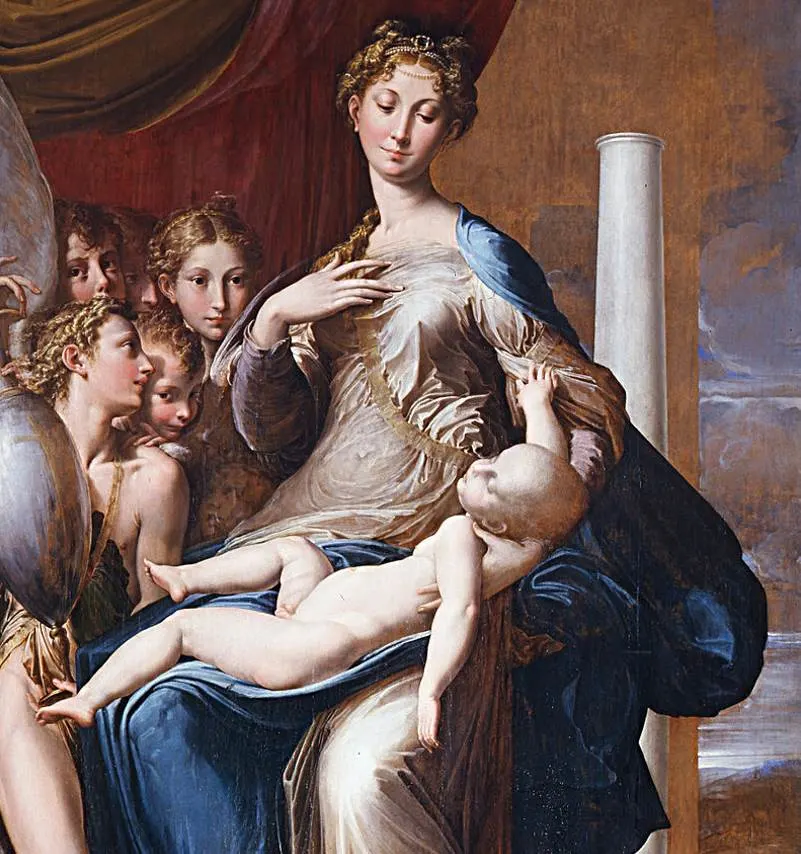
4. Il Paradiso – Tintoretto
- Date created: 1594
- Dimensions: 9.1 x 22.6 meters (29.9 x 74.1 feet)
- Location: Doge’s Palace, Venice, Italy
Il Paradiso is one of the most astounding works of art ever created, and that’s not just because it’s considered to be the largest canvas painting in history. It was painted by Tintoretto depicts various religious scenes in an overall composition resembling Heaven.
The painting decorates the main wall of the biggest hall at the Doge’s Palace in Venice and has been in place ever since it was completed in the 1590s. It was also one of the final paintings in the career of Tintoretto (1518-1594), a man who was in his 70s when he and his workshop started working on this incredible work of art.
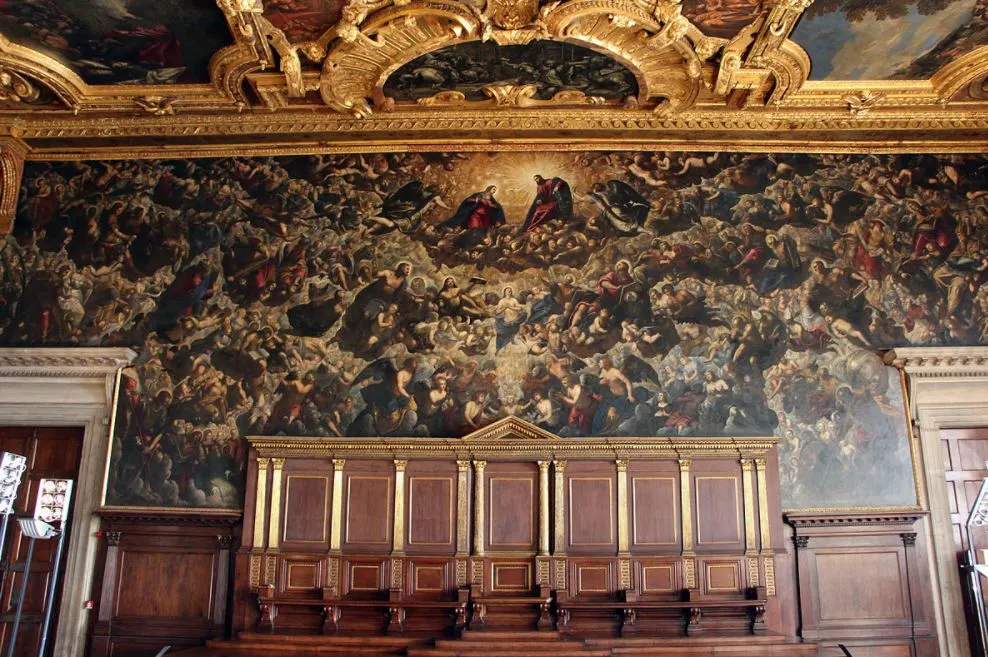
5. The Archdukes Albert and Isabella Visiting a Collector’s Cabinet – Jan Brueghel the Elder
- Date created: 1621-1623
- Dimensions: 94 × 123.3 centimeters (37 × 48.5 inches)
- Location: The Walters Art Museum, Baltimore, United States
The Archdukes Albert and Isabella Visiting a Collector’s Cabinet depicts Archdukes Albert and Isabella as they visit an art gallery in the region they ruled in the late 16th and early 17th centuries, the Habsburg Spanish Netherlands. It was painted by Jan Brueghel the Elder (1568-1625) and is considered to be one of his finest works.
Isabella is seen seated with her husband standing behind her, and an art dealer accompanies the couple. This particular type of painting is referred to as “Constkamer” which translates to “room of art,” a popular type of painting in Flanders at the time.
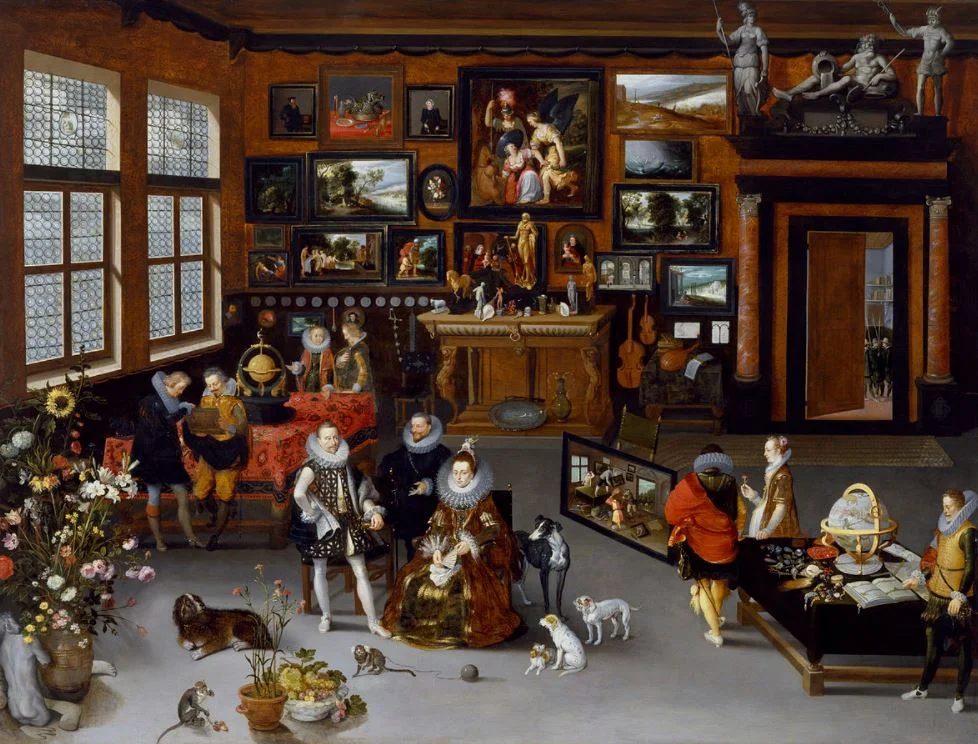
6. View of Toledo – El Greco
- Date created: 1596-1600
- Dimensions: 121.3 × 108.6 centimeters (47.8 × 42.8 inches)
- Location: The Metropolitan Museum of Art, New York City, United States
View of Toledo is another famous work by El Greco and only one of the two extant landscapes that he ever painted. The work is world-famous because of its gloomy sky, a feature that became one of the most influential elements in the artist’s oeuvre.
The painting is located at the Metropolitan Museum of Art in New York City and gives us a peek at how this important city in Spain’s history looked like. Although the castle on the left is accurately depicted, most other landmarks such as Toledo Cathedral aren’t.
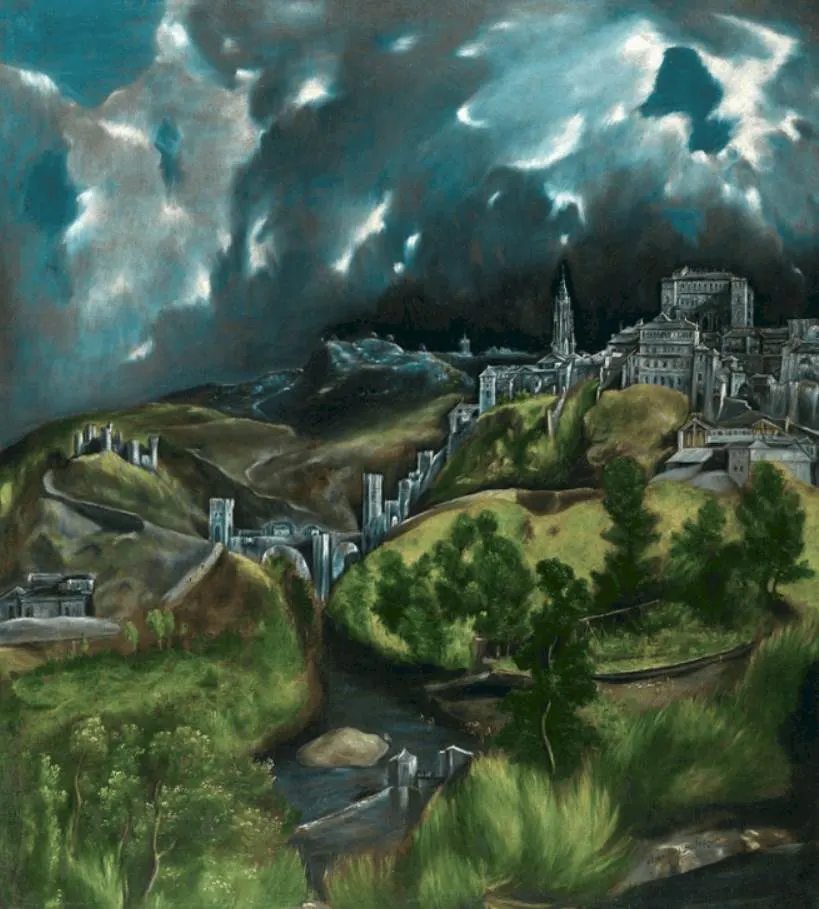
7. Portrait of Eleanor of Toledo – Bronzino
- Date created: 1545
- Dimensions: 115 × 96 centimeters (45 × 38 inches)
- Location: Uffizi Gallery, Florence, Italy
The Portrait of Eleanor of Toledo depicts Eleanor of Toledo (1522-1562), the wife of wife of Cosimo I de Medici, Grand Duke of Tuscany (1519-1574), along with her son. It’s one of the most famous works in the oeuvre of Agnolo di Cosimo, better known by his nickname “Bronzino.”
Just like most portraits created during the Mannerist era, she is depicted in a heavily idealized manner. It’s also the first-ever state-commissioned portrait featuring an heir, an effort of Duke Cosimo I to bring stability to the area he ruled over.
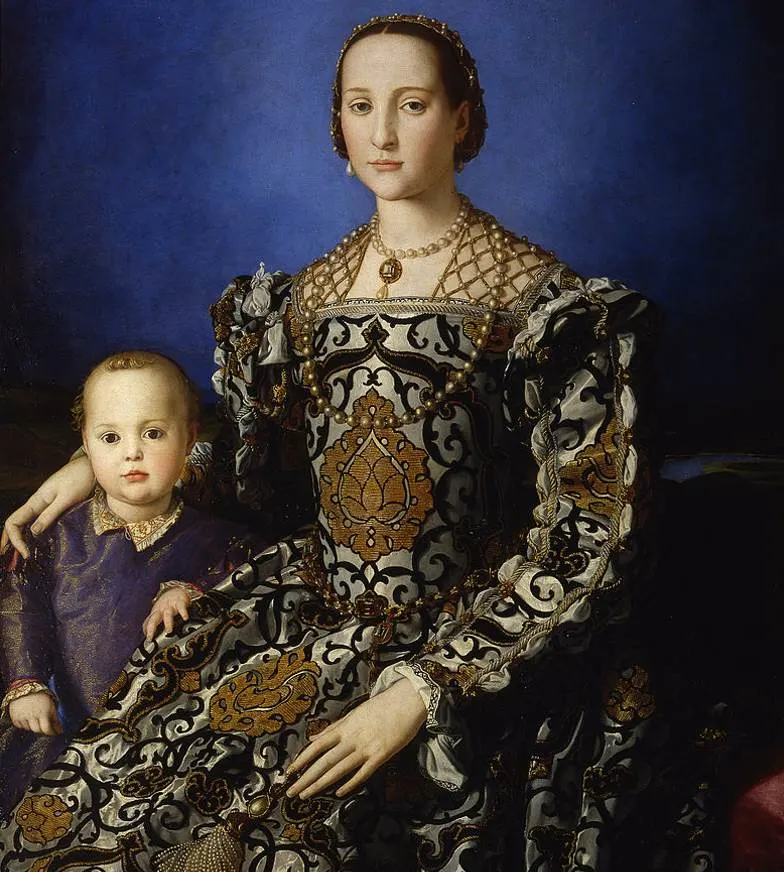
8. The Feast in the House of Levi – Paolo Veronese
- Date created: 1573
- Dimensions: 560 × 1,309 centimeters (220 × 515 inches)
- Location: Gallerie dell’Academia, Venice, Italy
The Feast in the House of Levi is another monumental banquet scene produced by Paolo Veronese. It has an interesting backstory because it was intended to be a Last Supper painting, but Veronese got in trouble with the religious police at the time.
This was a period shortly after the Catholic Reformation had started, the answer of the Catholic Church to the Protestant Reformation of the 16th century. Veronese was summoned by the Venetian Inquisition for including monkeys and drunkards. He never actually changed the work, only the title, to stay out of trouble.

9. Miracle of the Slave – Tintoretto
- Date created: 1548
- Dimensions: 416 × 544 centimeters (164 × 214 inches)
- Location: Gallerie dell’Accademia, Venice, Italy
The Miracle of the Slave was commissioned to decorate the Scuola di San Marco in Venice. It was one of the defining paintings in the early career of Tintoretto and he managed to distinguish himself with the bright and vivid use of colors.
The painting depicts a story in the life of Saint Mark, the patron saint of Venice. Mark can be seen descending from the Heavens above as he miraculously removes the shackles of the slave who is about to be martyred.
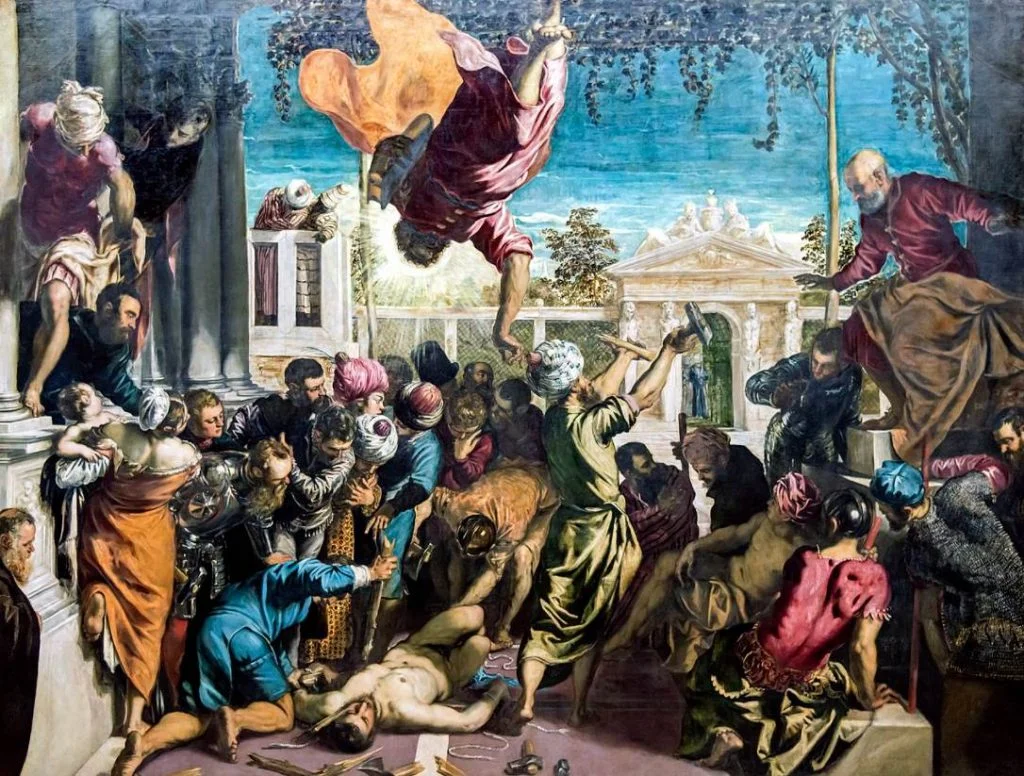
10. Opening of the Fifth Seal – El Greco
- Date created: 1608-1614
- Dimensions: 224.8 × 199.4 centimeters (88.5 × 78.5 inches)
- Location: The Metropolitan Museum of Art, New York City, United States
The Opening of the Fifth Seal is also referred to as “The Vision of Saint John” and is one of the final works of art created by El Greco. It was commissioned to decorate the Church of Saint John the Baptist just outside of the city walls of Toledo.
The main figure on the left side of the painting is seen waving frantically towards a non-existing scene above, which means that the upper part of the painting is missing. The upper part was destroyed in 10 and might have depicted the sacrificial lamb opening the Fifth Seal. Regardless of this, it’s one of the most influential works of art in the oeuvre of El Greco.

